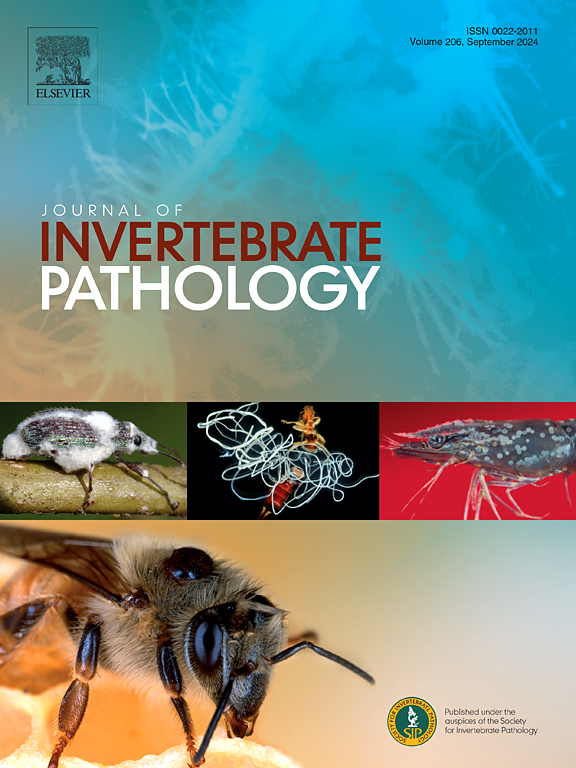利用线性指数评估cordatus(甲壳纲,十足纲,棘足科)的组织学变化和生物计量学
IF 2.4
3区 生物学
Q1 ZOOLOGY
引用次数: 0
摘要
几十年来,组织学分析已被用于评估脊椎动物的急性和慢性外源性药物的影响。然而,很少有研究讨论组织改变及其与生物计量学在无脊椎动物(如甲壳类动物)健康中的作用。此外,文献中没有数学指标来评估甲壳类动物的组织学或生物统计学发现。本研究旨在开发一种方案,以评估受外源暴露影响的器官的组织学改变,并使用线性指数与甲壳类动物的生物计量学相关。该研究的指导思想是需要为螃蟹器官的组织学变化和生物特征建立一个特定的评分表和分类系统。制定的方案是基于线性数学指标,包括三个变量:(α)病理因素,指的是组织改变和器官损害之间的关系;(β)改变评分,根据病变程度和/或改变数量定义;和(χ)生物特征因子,根据体重与甲壳宽度的关系确定,该因子与脐带鱼组织学变化的发生有直接关系。敏感性分析表明,病变的病理因素或评分直接影响病变的改变、反应模式和总指标对特定变化的敏感性。通过提出甲壳类动物组织学变化的标准化评分表,该方案有助于对螃蟹健康进行全球加权评估,并有可能应用于其他甲壳类动物。本文章由计算机程序翻译,如有差异,请以英文原文为准。

A protocol for assessing histological changes and biometry in Ucides cordatus (Crustacea, Decapoda, Ocypodidae) using linear indices
For decades, histological analysis has been used to assess the acute and chronic effects of xenobiotics in vertebrates. However, there are few studies discussing the role of histological alterations and their relationship with biometry in the health of invertebrates, such as crustaceans. Furthermore, there are no mathematical indices in the literature to assess histological or biometric findings in crustaceans. This study aimed to develop a protocol for assessing histological alterations in organs affected by xenobiotic exposure and correlations with biometry in crustaceans using linear indices. The research was guided by the need to create a specific scoring table and classification system for histological changes and biometrics in crab organs. The developed protocol is based on linear mathematical indices comprising three variables: (α) pathological factor, referring to the relationship between histological alteration and organ impairment; (β) alteration score, defined from lesion extent and/or number of alterations; and (χ) biometric factor, determined based on the relationship between body weight and carapace width, which is directly related to the occurrence of histological changes in Ucides cordatus. Sensitivity analysis showed that the sensitivity of alteration, reaction pattern, and total indices to a specific change is directly influenced by the lesion’s pathological factor or score. By presenting a standardized scoring table for histological changes in crustaceans, the proposed protocol contributes to a global and weighted assessment of crab health, with potential application in other crustaceans.
求助全文
通过发布文献求助,成功后即可免费获取论文全文。
去求助
来源期刊
CiteScore
6.10
自引率
5.90%
发文量
94
审稿时长
1 months
期刊介绍:
The Journal of Invertebrate Pathology presents original research articles and notes on the induction and pathogenesis of diseases of invertebrates, including the suppression of diseases in beneficial species, and the use of diseases in controlling undesirable species. In addition, the journal publishes the results of physiological, morphological, genetic, immunological and ecological studies as related to the etiologic agents of diseases of invertebrates.
The Journal of Invertebrate Pathology is the adopted journal of the Society for Invertebrate Pathology, and is available to SIP members at a special reduced price.

 求助内容:
求助内容: 应助结果提醒方式:
应助结果提醒方式:


